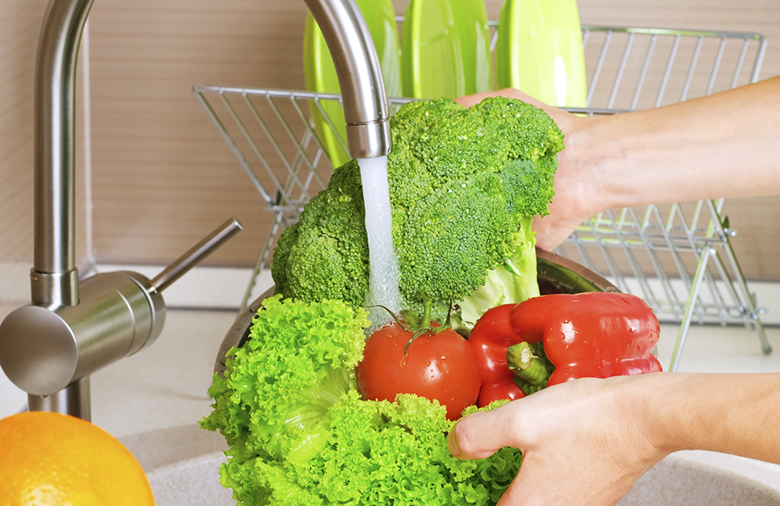It’s important to eat a rainbow of fresh fruits and vegetables that not only help make you healthier, but might also help prevent disease – including cancer.
It’s also important that they’re clean. Very clean.
According to the Food and Drug Administration, nearly 48 million people are sickened by contaminated food and harmful germs each year. Surprisingly, fruits and vegetables can be tainted not only by pesticides, herbicides and fertilizers during the growing phase, but also by animal waste, unclean water and poor worker hygiene. Produce can even be tainted once in markets, through improper storage and during food preparation.
To celebrate National Fresh Fruits and Vegetables Month, here are 12 tips on how to clean produce and ensure your delicious and nutritious fruits and vegetables are free of contaminants:
- Shop at stores or markets that offer the freshest of produce
- Buy local, seasonal produce, as shorter shipping times means less chemical sprays
- Observe if displays are being misted often or bedded with ice
- Select fruits and vegetables that are free of blemishes and bruises
- Buy only enough produce that you can use in a few days
- After purchase, transport selections in an ice chest or insulated carrier
- Once home, thoroughly wash hands with soap and warm water before handling
- Cut away any damaged areas before washing to prevent internal contamination from knifes
- Spray with a produce wash and let sit momentarily
- Use a vegetable brush to scrub produce that can tolerate the force
- Dry produce with a clean cloth or paper towel to prevent rot
- Transfer to storage bags and refrigerate promptly at 40 degrees or colder
Which fruits and vegetables need the most cleaning?
While all produce should be properly cleaned before cooking or eating raw, some are more contaminated than others – most often due to chemical residues such as, pesticides, herbicides and fertilizers. Others are more notably clean due to their growing process needing less chemical intervention or they have naturally protective outer layers.
Here are lists of the top 15 dirtiest and cleanest fruits and vegetables.
Top 15 Dirtiest
- Apples
- Celery
- Cherries
- Tomatoes
- Grapes
- Cucumbers
- Hot Peppers
- Nectarines
- Peaches
- Potatoes
- Spinach
- Strawberries
- Sweet Bell Peppers
- Collard Greens & Kale
- Summer Squash & Zucchini
Top 15 Cleanest
- Asparagus
- Avocado
- Cabbage
- Cantaloupe
- Corn
- Eggplant
- Grapefruit
- Kiwi
- Mangos
- Mushrooms
- Onions
- Papaya
- Pineapples
- Sweet Peas
- Sweet Potatoes
Consider sharing this article with a family member or friend who might benefit from learning this information.
Sources
http://cancer.stanford.edu/information/nutritionAndCancer/reduceRisk/
http://www.fda.gov/forconsumers/consumerupdates/ucm256215.htm
http://www.brendawatson.com/Healthy-Living/200807/the-importance-of-washing-produce.htm
http://www.ext.colostate.edu/pubs/foodnut/09380.html
Related Articles
Enjoying a Rainbow of Produce – Red Fruits and Vegetables
Enjoying a Rainbow of Produce – Orange Fruits and Vegetables
Enjoying a Rainbow of Produce – Yellow Fruits and Vegetables
Enjoying a Rainbow of Produce – Green Fruits and Vegetables
Enjoying a Rainbow of Produce – Blue and Purple Fruits and Vegetables

Join the Discussion
0 Comments